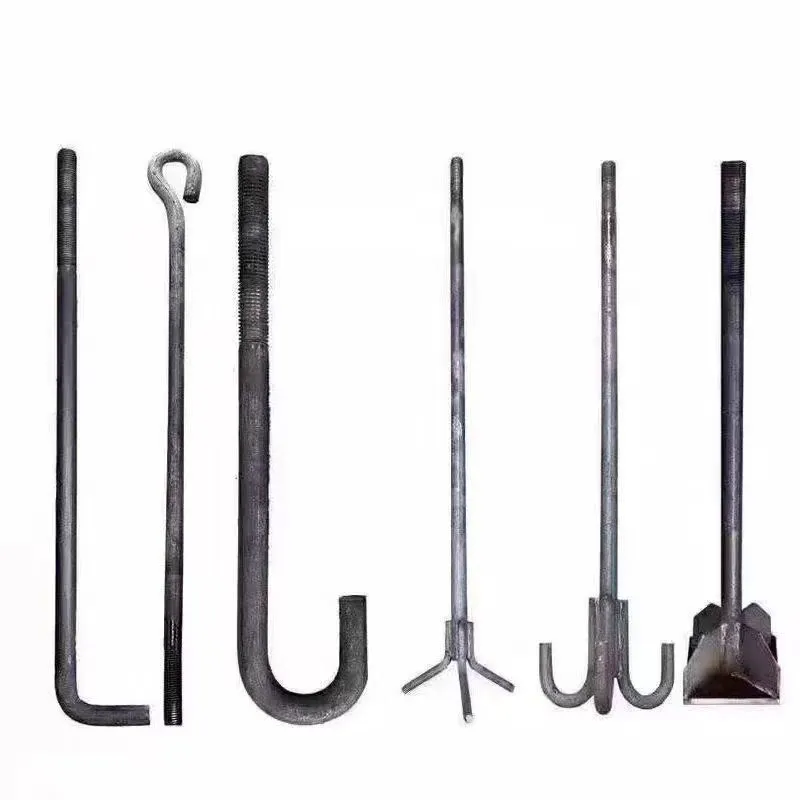

M10 Flange Nut Specifications and Applications for Efficient Fastening Solutions
Oct . 21, 2024 22:09 Back to list
M10 Flange Nut Specifications and Applications for Efficient Fastening Solutions
Understanding M10 Flange Nuts A Comprehensive Guide
Flange nuts are a vital component in the world of engineering, construction, and furniture assembly. Among various standard sizes, the M10 flange nut is particularly popular due to its versatility and application in different settings. This article aims to explore the features, functions, applications, and benefits of M10 flange nuts.
What is an M10 Flange Nut?
The designation M10 refers to the metric thread size of the nut, where M indicates that it is a metric fastener and 10 denotes a nominal diameter of 10 millimeters. The flange in its name refers to the integrated, wide collar at the top of the nut, which distributes the load over a larger area when tightened. This design reduces the likelihood of damage to the material being fastened and prevents the nut from loosening due to vibration.
Features of M10 Flange Nuts
M10 flange nuts typically exhibit several key features
1. Material Variety M10 flange nuts are manufactured from a range of materials, including steel, stainless steel, and plastic. Steel options may have various coatings, such as zinc electroplating, to enhance corrosion resistance.
2. Threaded Design The internal threads are precision-engineered to match M10 bolts, ensuring a perfect fit that allows for easy installation and secure fastening.
3. Flanged Top The flange provides a larger bearing surface which increases stability and decreases the risk of stripping the threads during tightening.
4. Durability High-quality M10 flange nuts are designed to withstand extreme conditions, including temperature variations, humidity, and mechanical stress, ensuring long-term reliability.
Functions of M10 Flange Nuts
The primary function of an M10 flange nut is to secure a joint or assembly in place. When used with an M10 bolt or screw, the nut creates a strong connection that holds materials together. Its wide flange design not only distributes force evenly but also prevents damage to surfaces beneath, making it especially useful in applications with limited space.
Applications of M10 Flange Nuts
m10 x 1.0 flange nut

M10 flange nuts are utilized across various industries
1. Automotive In vehicles, flange nuts secure critical components, from engine parts to chassis assemblies, thanks to their excellent retaining capabilities.
2. Construction Used in structural framing and in conjunction with bolts to join heavy-duty materials, M10 flange nuts are a staple in the construction industry.
3. Furniture Assembly Many types of furniture, particularly those requiring robust joints, employ M10 flange nuts due to their ease of use and reliability.
4. Machinery In mechanical assemblies, these nuts maintain the integrity of joints, contributing to the smooth operation of machines.
Benefits of Using M10 Flange Nuts
1. Ease of Installation M10 flange nuts are generally easy to install with hand tools, allowing for swift assembly processes.
2. Vibration Resistance The flange design makes these nuts particularly effective at resisting loosening, which is common in applications subject to vibration.
3. Protection of Surfaces The flange effectively spreads the load, protecting the surface of the materials being joined.
4. Reduced Risk of Cross-Threading The design of M10 flange nuts allows for easier alignment during installation, minimizing the chances of cross-threading that could compromise the fastening system.
Conclusion
In conclusion, M10 flange nuts are vital components in numerous applications, providing robust, reliable, and efficient fastening solutions. Their design allows them to withstand various environmental conditions and mechanical stresses, making them a favorite among engineers and tradespeople alike. Whether in construction, automotive applications, or furniture manufacturing, understanding the functionality and benefits of M10 flange nuts can greatly assist in achieving secure and durable assemblies. With their ease of use and effectiveness, they are a standard choice for both professionals and DIY enthusiasts.
Latest news
-
High-Strength Hot Dip Galvanized Bolts - Hebei Longze | Corrosion Resistance, Customization
NewsJul.30,2025
-
Hot Dip Galvanized Bolts-Hebei Longze|Corrosion Resistance&High Strength
NewsJul.30,2025
-
High-Strength Hot-Dip Galvanized Bolts-Hebei Longze|Corrosion Resistance&High Strength
NewsJul.30,2025
-
Hot Dip Galvanized Bolts-Hebei Longze|Corrosion Resistance&High Strength
NewsJul.30,2025
-
Hot Dip Galvanized Bolts - Hebei Longze | Corrosion Resistance, High Strength
NewsJul.30,2025
-
High-Strength Hot Dip Galvanized Bolts-Hebei Longze|Corrosion Resistance, Grade 8.8
NewsJul.30,2025

